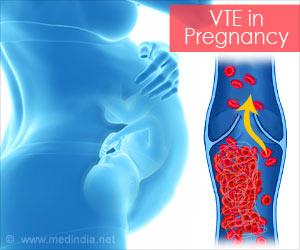Highlights
- Venous thromboembolism is the third-leading cause of stroke and heart attack affecting nearly 600,000 Americans.
- The risk of venous thromboembolism is higher in both men and women who are taller than 6’2" and 6’
- As the height of the population increases, the incidence of thrombosis increases and the risk is lower in shorter people
Venous thromboembolism is a type of blood clot that starts in a vein. The research team also found:
- For men who were shorter than 5’3", the potential risk of venous thromboembolism fell by 65 percent than those men who were 6’2" or taller.
- For women who were shorter than 5’1" and were pregnant for the very first time had 69 percent reduction in the risk of venous thromboembolism than those women who were 6 feet or taller.
On the other hand, the height in the population has increased and continues to grow, which contributes to the fact that there is an increase in the incidence of thrombosis.
Common Triggers for Blood Clots in Veins
Immobilization, hospitalization, cancer, and surgery are the most common triggers. The triggers in women could be pregnancy or use of hormones such as oral contraceptive or estrogen for menopause symptoms.
"It could just be that because taller individuals have longer leg veins, there is more surface area where problems can occur, " said Zöller.
There is also more gravitational pressure in the leg veins of taller people, which increases the risk of blood flow slowing or stopping temporarily.
A limitation of this study is that the research team could not access to data of both parent and child’s lifestyle factors (smoking, diet, physical activity).
Also, the study was primarily conducted among the Swedish people and may not apply to the population of the United States. However, nowadays even the Swedish population is as ethnically diverse as the U.S. population.
Zöller said, "I think we should start to include height in risk assessment just as overweight, although formal studies are needed to determine exactly how height interacts with inherited blood disorders and other conditions."
What is Venous thromboembolism?
Venous thromboembolism (VTE), a formation of blood clots in the vein is called a deep vein thrombosis (DVT). When the clot breaks and travels to the lungs, it is known as a pulmonary embolism (PE), and together DVT and PE are known as VTE.
Clotting is usually seen in older people, obese or overweight individuals or those who have conditions like cancer or autoimmune disorders. VTE is most common for adults who are 60 years and above. However, it can occur at any age, and VTE rarely affects children.
Worldwide, VTE is one leading cause of death and can occur without any warning signs or symptoms, where it can go unrecognized and undiagnosed.
DVT and PE are both life-threatening conditions and require immediate medical attention. Treatment can differ, but blood thinning drugs can be given to break the clots and prevent new ones from forming.
Reference
- Bengt Zöller, Jianguang Ji, Jan Sundquist, Kristina Sundquist. Body Height and Incident Risk of Venous Thromboembolism. Circulation: Cardiovascular Genetics. (2017).
Source-Medindia















